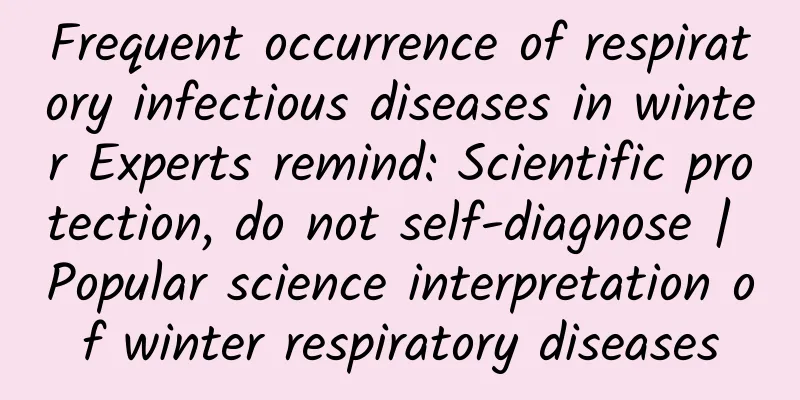Can I get pregnant if I have bilateral polycystic ovaries?

|
There are actually many types of polycystic ovary pregnancy, one of which is bilateral polycystic ovary changes. When such a situation is found, you should pay more attention and it is best to see a doctor for treatment. If you want to get pregnant, you need to pay more attention to your health and pay attention to changes in your body's condition. So is it possible to get pregnant if I have polycystic changes in both ovaries? Can I get pregnant if I have bilateral polycystic ovaries? Some women have been suffering from infertility for a long time. After going to the hospital for examination, they found that there was a problem with their uterus and ovaries. The uterus and ovaries are the areas where egg cells are produced. The health of the uterus and ovaries directly determines the success rate of pregnancy. If a woman has bilateral polycystic ovaries, she needs timely treatment. What does bilateral polycystic ovarian changes mean? Let’s find out together. What does bilateral polycystic ovaries mean? To put it simply, bilateral ovarian polycystic changes refer to women suffering from polycystic ovarian syndrome. Polycystic ovaries can lead to ovulation disorders or anovulation in women, ultimately causing female infertility. The symptoms of bilateral polycystic ovary include irregular menstruation, obesity, excessive hair growth and infertility, which cause great harm to the health of many female friends. It is necessary to go to a regular hospital for examination in time to avoid missing the best time for treatment. The exact cause of PCOS is unknown. At present, it is believed that the uterus and ovaries produce too much male hormone, and the excess of male hormone is the result of abnormal synergy of various endocrine functions in the body. The purpose of treatment is mainly to establish a normal physiological cycle with ovulation, restore reproductive function, and eliminate excess hair. Once a normal menstrual cycle is established, pregnancy can be achieved, the uterus and ovaries no longer produce excessive male hormones, and the symptoms will gradually subside. The symptoms of bilateral polycystic ovary mainly include menstrual disorders or even amenorrhea. Many patients with the disease will also have high levels of male hormones and increased prolactin levels. The patient's ovaries will be enlarged and contain multiple small eggs. Even if ovulation occurs, ovulation disorders or luteinized cysts and thick ovarian walls may occur, which are related to pancreatic antagonism. Immune substances may appear around the patient's ovaries, affecting the maturity or discharge of eggs. How to treat bilateral polycystic ovaries The uterus and ovaries are a very important part of the female reproductive system. Without the uterus and ovaries, it is impossible to form oocytes, and of course there will be no oocytes meeting with sperm to form sperm-egg fusion. Many women have bilateral polycystic ovaries, which makes them very confused and feel that their reproductive function will definitely be affected. So how to treat bilateral polycystic ovaries? How to treat polycystic ovary There are many treatments for polycystic ovary, but it is also necessary to closely follow the conditioning of daily life, from diet to conditioning of daily life. 1. Adjustment of food, clothing, housing and transportation: Female patients with ovarian infertility should first pay attention to adjustment in life: pay attention to daily life, suitable living environment, moderate exercise, and avoid overwork. Especially during long-term treatment, you should pay attention to rest, maintain your energy, eat a nutritious diet, and adjust your clothes according to the weather to avoid infection by bacteria, viruses, etc. 2. Reasonable diet: Experts suggest that patients with ovarian infertility should usually choose foods with a low glycemic index. Eat less foods containing saturated fat and esterified oleic acid, such as pork and beef minced meat, white meat, various poultry and livestock and animal skins, cream, artificial cream, whole milk, fried foods, etc. |
<<: More than 12 ovarian follicles on both sides
>>: Can I get pregnant with bilateral polycystic ovaries?
Recommend
What causes pain in the right lower abdomen during ovulation?
Ovulation pain The rupture of the ovarian follicl...
What causes inverted nipples?
When the nipple indentation of adult women is emb...
Which department should a woman go to if she has dull pain in her lower abdomen?
Clinically, it is recommended that women with pai...
Does bleeding during pregnancy affect the fetus?
Constipation is a problem that every girl should ...
There are 5 recipes for breast enhancement during menstruation
Breast enhancement is a topic that women have bee...
Is vulvar candidiasis serious?
Key reminder: Vaginal candidiasis has received a ...
Precautions for menopausal syndrome
Many women who reach a certain age or are in a lo...
Causes and measures of contraceptive ring falling off
The contraceptive device is an important long-ter...
The best time to lose weight after childbirth
The postpartum recovery period is generally about...
What are the signs before your first menstrual period?
For many women, when they are not yet adults, the...
Reasons for delayed menstruation in the second month after abortion
The reason why menstruation is delayed in the sec...
No menstruation after induced abortion for two months
The body is still in the recovery stage after the...
Shivering after taking anti-inflammatory drugs after sterilization surgery
We all know that using condoms is an effective me...
How many days of missed menstruation can I test for pregnancy
Generally speaking, women's menstrual cycle i...
What is the reason why the follicles are discharged before they mature?
I believe that many women have heard of the pheno...









